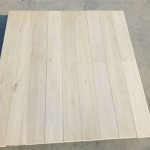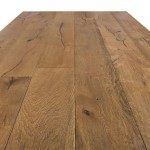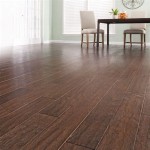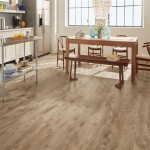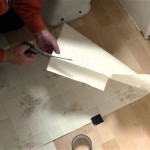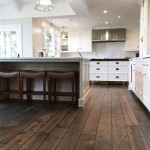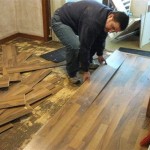Non-Slip Outdoor Flooring: Ensuring Safety and Comfort
Outdoor living spaces have become increasingly popular, offering extensions to homes for relaxation, entertainment, and dining. However, the presence of moisture, whether from rain, spills, or dew, can pose a significant safety hazard, creating slippery surfaces. Non-slip outdoor flooring addresses this concern, providing a safe and comfortable environment for all. This comprehensive guide explores the crucial factors to consider when choosing non-slip outdoor flooring, highlighting its benefits and discussing various options available.
Understanding the Importance of Non-Slip Outdoor Flooring
The risk of slips, trips, and falls on outdoor surfaces is a serious concern. Wet surfaces become particularly treacherous, increasing the likelihood of accidents. Non-slip outdoor flooring mitigates these risks by providing textured surfaces, grooves, or patterns that enhance traction and prevent slipping. This is especially important in high-traffic areas, around pools, or on walkways where spills or moisture are common.
Beyond safety, non-slip flooring also contributes to overall comfort. It provides a secure footing, reducing the risk of wobbly steps or sudden slips, allowing individuals to enjoy their outdoor spaces without worrying about potential falls. This feeling of security enhances the overall enjoyment and relaxation associated with outdoor living.
Key Factors to Consider When Choosing Non-Slip Outdoor Flooring
Selecting the right non-slip outdoor flooring requires careful consideration of several key factors. These include:
1. Material:
The material of the flooring significantly impacts its durability, slip resistance, and aesthetic appeal. Common materials for non-slip outdoor flooring include:
- Tile: Ceramic and porcelain tiles are durable, waterproof, and often feature textured surfaces for slip resistance.
- Stone: Natural stone options like slate, flagstone, and granite offer a rustic look, but require proper sealing and maintenance to prevent slipping.
- Concrete: Concrete is a versatile option that can be stained, stamped, or textured for a variety of aesthetics. Applying a non-slip coating can enhance its safety.
- Wood: Treated wood decking provides warmth and natural beauty, but requires periodic maintenance and consideration of slip resistance properties.
- Composite Decking: Composite decking, a blend of wood fibers and plastic, offers low-maintenance and slip-resistant qualities.
2. Slip Resistance:
The slip resistance of a material is measured using the coefficient of friction (COF), which indicates the level of resistance to slipping. Higher COF values indicate greater slip resistance. Choose flooring materials with a COF of 0.5 or higher for optimal safety, especially in areas prone to moisture.
3. Aesthetics:
Non-slip outdoor flooring should complement the overall design and style of the outdoor space while maintaining safety. Consider the color, texture, and patterns available to create a cohesive and visually appealing environment.
4. Maintenance:
Maintenance requirements vary depending on the chosen material. Some materials require regular cleaning and sealing, while others offer low-maintenance options. Factor in the time and effort required for ongoing maintenance to ensure the longevity and safety of the flooring.
Popular Non-Slip Outdoor Flooring Options
The market offers a diverse range of non-slip outdoor flooring options to suit various styles and budgets. Some popular choices include:
1. Textured Tiles:
Textured ceramic or porcelain tiles with grooved surfaces, raised patterns, or embedded aggregates provide excellent slip resistance and a variety of design options.
2. Anti-Slip Coatings:
Anti-slip coatings can be applied to existing concrete, wood, or tile surfaces to enhance their slip resistance. These coatings contain abrasive particles or textures to create a non-slip surface.
3. Synthetic Turf:
Synthetic turf, often used for landscaping, can also serve as safe and comfortable outdoor flooring. It offers drainage and a soft, non-slip surface.
4. Rubber Tiles:
Rubber tiles, widely used for playgrounds and gymnasiums, provide excellent slip resistance and cushioning, making them ideal for patios, walkways, and around pools.
In conclusion, non-slip outdoor flooring is crucial for creating safe and comfortable outdoor living spaces. Careful consideration of the material, slip resistance, aesthetics, and maintenance requirements will lead to a selection that prioritizes safety while complementing the design and style of the outdoor space.

Outdoor Anti Slip Tiles Specialist For Spaces

Outdoor Floor Tiles For Beautiful Outdoors Supergres

Non Slip Coating For Outdoor Tiles Panther Protective

Outdoor Non Slip Matting Rubber Deck Tiles Mad Matter

Outdoor Non Slip Decking Mats Mayfield

Factory Best 2cm Thick Non Slip Outdoor Porcelain Floor Tiles China Tile Made In Com

10 Easy Pieces Non Slip Floor Tiles Gardenista

Anti Slip Floor Tiles Low S And Free Samples Direct Tile Warehouse

Slip Resistant Tiles Non Ctm

5 Helpful Tips To Select The Best Non Slip Outdoor Tiles For This Monsoon Season
Related Posts

